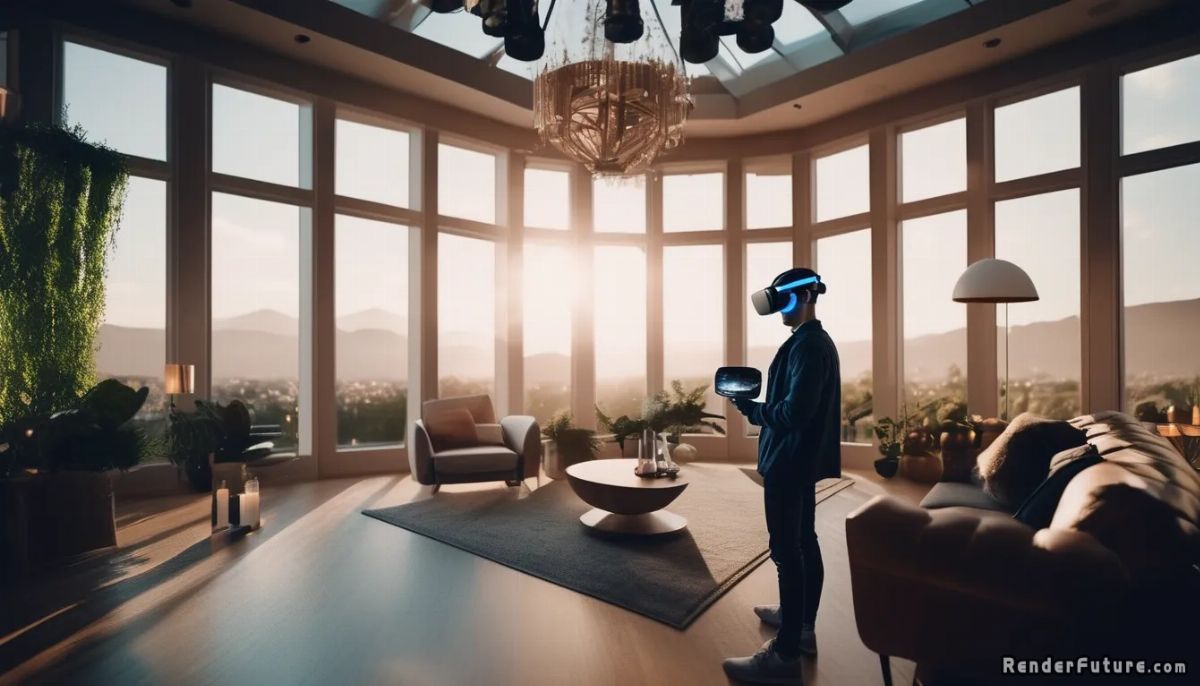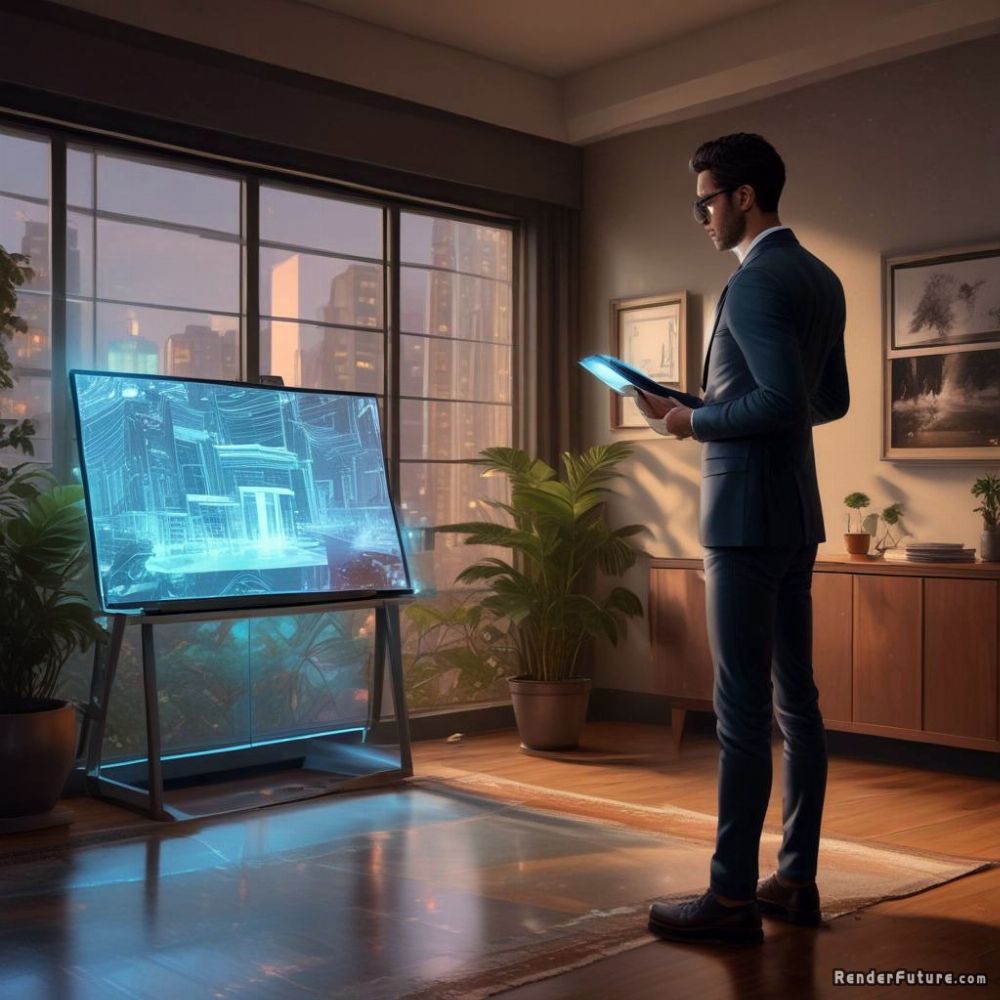The Future of Real Estate
Digital Revolution Meets Climate Crisis…
Imagine waking up in 2045 and buying your dream home before breakfast—without ever leaving your couch. A hyper-realistic virtual tour, an AI negotiating the price, and a blockchain contract signed in minutes. No realtors, no paperwork, no stress. This is the sleek, efficient future of real estate. But now picture another scene: that same coastal dream home is half-submerged, its value wiped out by rising seas, while insurance companies refuse to cover the next storm. The future of property isn’t just digital—it’s a high-stakes race between technological utopia and climate catastrophe.

The Virtual Real Estate Boom
The way we buy and sell homes is about to undergo a revolution that would make even the most tech-savvy millennial’s head spin. AI-powered platforms will analyze your preferences, income, and lifestyle to curate perfect property matches before you even know you’re looking. Virtual reality will replace open houses—why drive across town when you can walk through a photorealistic 3D model of a home, customized with your furniture and paint colors?
Blockchain will kill off title fraud and paperwork nightmares. Smart contracts will execute deals automatically the second conditions are met. No more waiting weeks for banks and lawyers. Want to buy a house at 2 AM on a Sunday? Done. AI “realtor bots” will handle negotiations, inspections, and even financing, learning from millions of past transactions to get you the best deal.
But here’s the catch: what happens to the millions of real estate agents, loan officers, and home inspectors when algorithms do it all faster and cheaper? The industry will have to adapt—or face mass obsolescence.
The Affordability Crisis and Digital Band-Aids
 Even as technology makes buying easier, owning a home is becoming a luxury. The global population is swelling, urban space is shrinking, and prices keep climbing. In megacities, a shoebox apartment could soon cost as much as a mansion did in 2025. But digital solutions might soften the blow.
Even as technology makes buying easier, owning a home is becoming a luxury. The global population is swelling, urban space is shrinking, and prices keep climbing. In megacities, a shoebox apartment could soon cost as much as a mansion did in 2025. But digital solutions might soften the blow.
Fractional ownership—buying shares of a property like stocks—could let average people invest in real estate without massive down payments. Tokenized homes on blockchain ledgers might allow micro-investments, where you own 0.1% of a skyscraper and earn passive income. AI-driven “dynamic pricing” could adjust home values in real time, preventing bubbles and crashes.
Governments may have to step in with radical solutions—3D-printed neighborhoods, modular homes that stack like Legos, or even underground housing developments. If they don’t, we could see a future where only the wealthy own property, while everyone else rents forever in a corporate-controlled housing market.
Climate Collapse and the Great Property Reset
 Now for the darkest twist in this future: climate change is rewriting the real estate map. Key West, Miami Beach, and Venice could be the first dominos to fall, swallowed by rising seas. By 2060, entire ZIP codes might be uninsurable, their mortgages worthless. Wildfires in California and Australia are already turning suburbs to ash, while droughts in the Southwest could make Phoenix uninhabitable.
Now for the darkest twist in this future: climate change is rewriting the real estate map. Key West, Miami Beach, and Venice could be the first dominos to fall, swallowed by rising seas. By 2060, entire ZIP codes might be uninsurable, their mortgages worthless. Wildfires in California and Australia are already turning suburbs to ash, while droughts in the Southwest could make Phoenix uninhabitable.
Insurance companies are the canaries in the coal mine—when they pull out of a region, the death spiral begins. Banks stop lending. Home values crash. And suddenly, “beachfront property” is a toxic asset. Some futurists predict a wave of “climate ghost towns,” where abandoned neighborhoods slowly decay under floodwaters or desert sands.
But there are glimmers of adaptation. Floating cities, like those being tested in the Maldives, could replace sinking coastlines. “Smart forests” with fire-resistant materials might save wildfire zones. And AI-powered disaster modeling could help us build in safer areas before it’s too late.
A Sci-Fi Future—Or Our Reality?
In the most extreme scenario, physical real estate could become so unstable that people invest in virtual land instead. The metaverse already has a booming property market—what if digital apartments someday hold more value than real ones? Could we see a world where the ultra-rich live in climate-proof biodomes while the rest of us rent VR homes?

It sounds like dystopian fiction, but the pieces are already moving. The question is whether we steer this future toward equity and resilience—or let it spiral into chaos.
Housing Shortages and the Rise of Next-Gen Construction
The global housing crisis is reaching a breaking point. Cities are bursting at the seams, construction can’t keep up with demand, and entire generations are being priced out of homeownership. But the way we build homes is undergoing a radical transformation—one that could either solve the shortage or deepen the divide.
Imagine AI-designed micro-cities rising in months, not years. Algorithms now optimize every inch of space, creating ultra-efficient layouts that fit more homes into less land. 3D-printed neighborhoods are already a reality—entire houses materializing in days, with robotic arms layering concrete and even recycled materials into sleek, customizable designs. In China, a company recently printed 10 homes in 24 hours for under $5,000 each. Could this be the answer to affordable housing?
But there’s a catch. While tech makes building faster and cheaper, zoning laws, NIMBYism (“Not In My Backyard”), and corporate land grabs are slowing progress. In some cities, vacant luxury condos sit empty while families cram into overcrowded rentals. The solution? Policy shifts—like vacant property taxes, modular housing mandates, and incentives for eco-friendly builds—could force the market to adapt.
Meanwhile, underground and vertical expansions are gaining traction. Cities like Singapore are building downward, with subterranean malls, farms, and even parks. “Sky cities”—dense, self-contained towers with housing, offices, and green spaces stacked vertically—could redefine urban living.
The future of construction isn’t just about building more—it’s about building smarter. If we embrace innovation and overhaul outdated systems, we might just close the housing gap before it swallows the next generation.

The Light at the End of the Tunnel
Despite the challenges, there’s hope. Sustainable architecture is advancing faster than ever—self-cooling buildings, solar-powered neighborhoods, and even carbon-negative homes. AI could help us design disaster-proof cities. And if governments act now, policies like managed retreats and climate-resilient loans could prevent total market collapse.
The future of real estate will be a battleground between convenience and crisis, between algorithms and climate disasters. But with smart planning, we might just build a world where everyone has a place to call home—whether it’s physical, digital, or floating on the ocean.
This isn’t just a story about buildings. It’s about belonging. And if you want to help write the next chapter, start by asking:
What kind of future are you building toward?

References and Sources
- McKinsey & Company – “The Future of Real Estate in the Digital Age”
Examines how AI and blockchain will reshape property markets.
https://www.mckinsey.com/industries/real-estate/our-insights - NASA – “Sea Level Rise Projections”
Data on which coastal cities are most at risk.
https://climate.nasa.gov/vital-signs/sea-level/ - The Economist – “The Coming Climate Mortgage Crisis”
How rising disaster risks could collapse housing markets.
https://www.economist.com/finance-and-economics/ - World Economic Forum – “Floating Cities and the Future of Urban Living”
Explores solutions for rising sea levels.
https://www.weforum.org/










